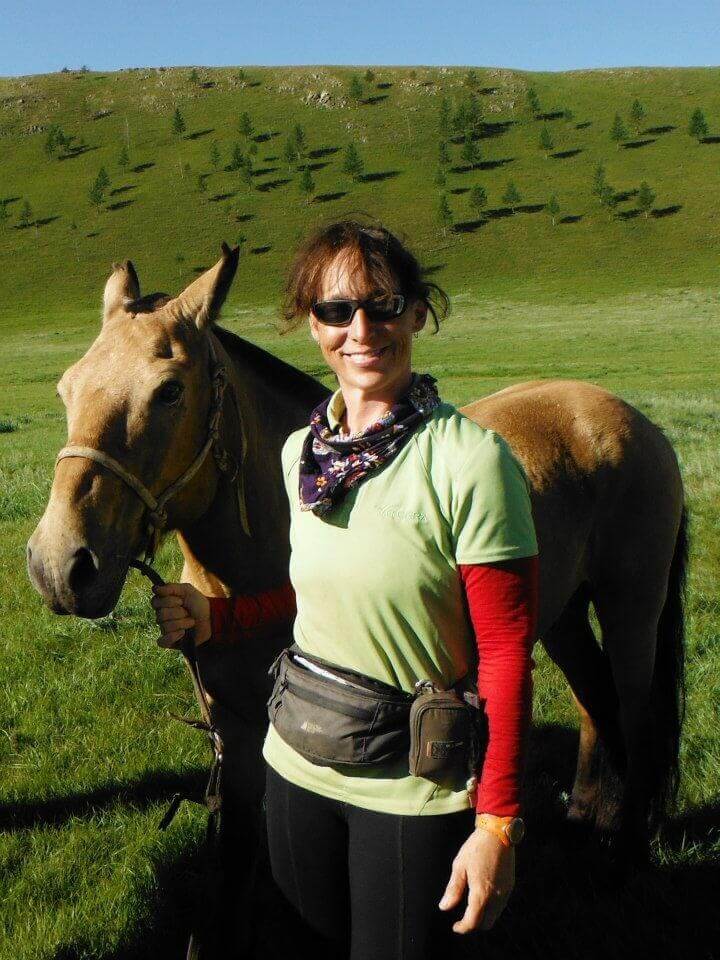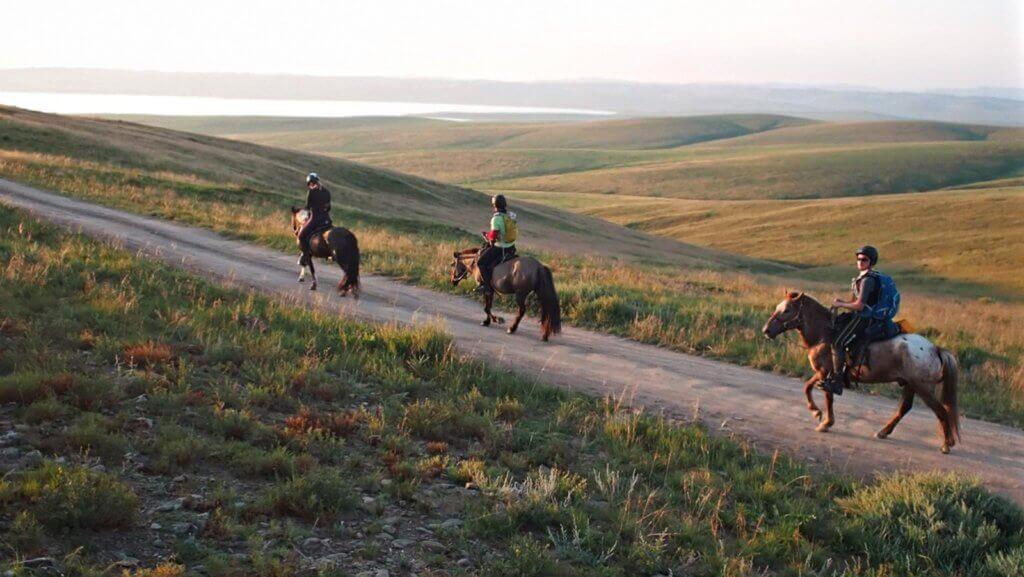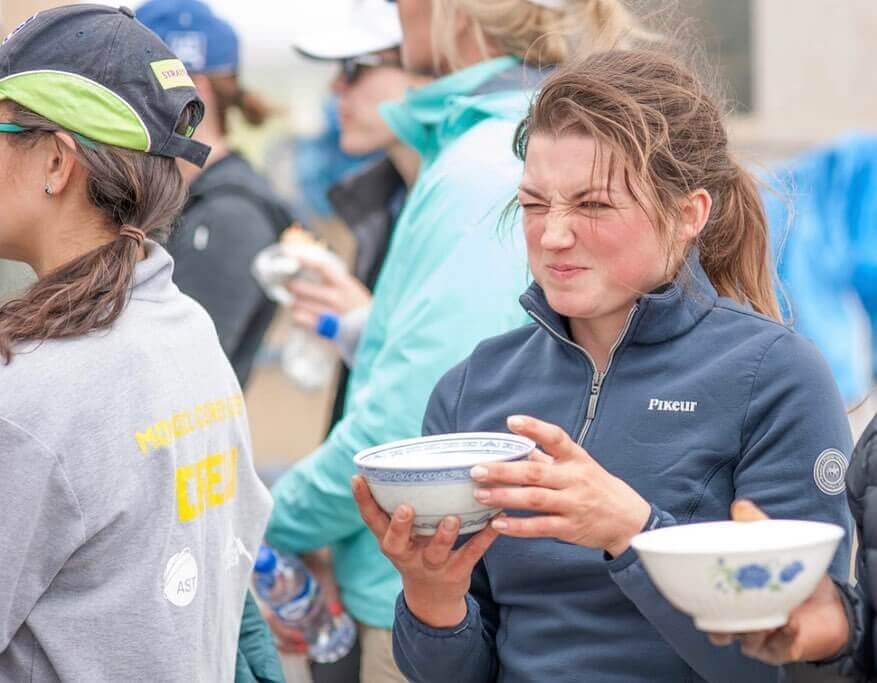Derby Diary #2
Training Camp Trials and Tribulations: the Guts and the Glory
The Derby proper begins when the start gun fires on Day 1 of the race, but there’s an entire universe of events leading up to that moment. Once the riders have made it to Mongolia, with or without their gear, start camp is the next stop and the first exposure to the realities of this race for the majority of these brave souls. Start camp is where you first get on a horse. Start camp is where you test your kit, test your mettle and where the steppe tests you in return.
Outlaw Kate (Katherine Friedley): “It was the first day of on-the-steppe rider training and I was both excited and extremely nervous about what was to come. I’d met up with a few of the riders back in UB and I was suffering from the worst case of imposter syndrome imaginable: there were the race-horse-riding girls from Dubai, the polo-playing rich-looking dudes from the UK and horse trainers and horse traders from all corners of the globe, all of whom seemed more nonchalant about the coming race than me. I was 47 years old and on the upper end of the age scale in comparison to the majority of the riders and definitely feeling out of my league. What was I doing here? But there was literally nothing I could do about my misgivings at that point except to cowboy-up and put on my game face.
I will forever remember my first training ride and settling on my first horse – a cooperative-looking dun with a dorsal stripe. I will also forever remember hitting the ground an hour later, doing around 20km/hr across the steppe in a race mock-up with Julie Youngblood. I knew the girth had loosened up somewhat but thought I could get to the end of the first ride without having to stop and tighten it. I didn’t factor in the absolute thirst those horses had for racing, and once my horse began to run neck and neck with Julie’s it was impossible to stop him. We were flying over the steppe when my saddle slipped up on the withers and as I tried to correct it, I sailed over my horse’s right shoulder, landing face first in a 100-yard skid. The vet crew that witnessed my crash said it was spectacular.
I got up from where I had hit the deck, bleeding from various parts of my face and thought, “Great! The first one to have a wreck and I can’t even hide my wounds under some piece of clothing!” Nope – my lip was cut, I had abrasions on the left side of my face, and I suspected I had done some damage to the ribs on my right side as I couldn’t hoist myself up from my bed without downing a bunch of T3’s first. Ten days later, back in civilisation and armed with a mirror, I saw for the first time the extensive bruising along my ribcage. All of my Derby photos are of me with a scabby lip and road-rash-face.
It was not a great way to start a race. I was hurting and I was embarrassed. The other riders, glad it wasn’t them, clucked in sympathy. Ben De Rivas disinfected my lip with some lukewarm beer. Cozy peeled off on his horse and retrieved my broken saddle. I imagined the herders glaring at me for basically falling off a horse, but I scored some points for not complaining and for offering to run down the horse myself on foot. Two days later, I got on my first Derby racehorse, said, “F#ck you imposter syndrome, let’s do this thing,” and didn’t look back.”


Thomas Burk: “It all started with an innocent sip of fermented mare’s milk during a toast to all the competitors the night before the Derby began. One cup of airag quickly turned into multiple, and instead of mixing in an occasional water to be adequately hydrated for the start of the race, a few Chinggis Lagers and pulls of Chinggis vodka were mixed in. After the official pre-race party concluded, dancing and of course the native sport of wrestling were next on the agenda. After ensuring that all the international co-eds were properly educated on the art of the Texas Two Step, wrestling with the nomadic herdsmen was the only logical next activity. Having wrestled for many years growing up, I felt confident in my ability to at least hold my own, not realising that our hosts did this almost every night for the majority of their lives. It didn’t take long for me to be violently thrown on my right shoulder by what had to be the biggest Mongolian on the entire steppe.
After standing up and attempting to walk it off, I could sense that this didn’t seem like it was getting any better and was worth getting a second opinion. After a quick medical consultation, it did not take long for the Derby Doctor to tell me, “You tore every ligament in your right shoulder,” which is not quite the news I was hoping for. Having travelled halfway around the world to participate in the race, I thought it was still worth giving the race a shot. With one arm in a sling, the starting instructions were given and we were off to the races. I quickly realised that I had two options: either take some pain killers and be able to steer, or don’t take pain killers and be able to navigate. One did not seem better than the other as my full strength was needed to control some of the feral horses, and my full mental acuity was needed to be able to successfully navigate the 650 mile race. Luckily, I was able to make some friends and bounce around between groups that I could keep up with for some of the time.
This strategy worked up until around the 300 or so mile mark when I started to drop back. Not wanting to get carried forward via car, I made the one phone call I was hoping to never make to the Derby Chief back in Ulaanbaatar. I informed her that my race was done as I didn’t think it was physically possible to complete the entirety of the race. If I could go back and do it again, I wouldn’t change a thing. To this day, I still have ligaments that stick out of my shoulder, and it’s always a reminder of the incredible (albeit brief) experience I had in 5 days of racing on the Steppe.”

Photo by Richard Dunwoody
Alanna Watt: “I was just getting used to their traditions. The culture had already shocked me in the city, and the fact the culture revolves around horses still amazes me to this day! It’s incredible. I was also amazed that they live in the wild yet have cars and motorbikes parked up outside their gers. This is nothing I’d ever imagined, to be honest. I expected everything to be a bit more wild and rustic.
The herders know what they’re doing, and they do it well. They’ve got life down to a tee. The turning out of the horses left me in shock. It was funny how they’d take different groups of horses off the line and take them to a different field per day. Their “turn out” is actually “go find your herd.”

Airag (fermented mare’s milk) – I really didn’t want to try this, but it’s rude not to. I braced but the bracing didn’t help: it was so, so sour. But event manager Erik persuaded me to try it again during the first day of the race as he claimed it would be nicer. He didn’t lie, it was better; I still wouldn’t say nice! How on earth the kids love it so much is beyond me.”

Photos by Ian Haggerty
Molly Pearson: “It was day 2 of training, and we started with a briefing about hobbling horses. You need to approach from behind the front legs and start with the far right one. Then left. Then back left. Keep your lead reign tight. And if you do it right, maybe, just maybe, your horse won’t wander off more than 3 miles in the middle of the night. Then it was time for our first ride. I had a horse that was a total potato. I wanted to ride with my friends, but he had other plans. I didn’t fight him when he wanted to veer left, so we went around alone for a while just fine. But then a gust of wind kicked up and my detachable sun brim kept blowing my helmet off my head. Then my goggles slipped. Then my buff flew in my eyes so I rode for a while almost blind. Good thing Potato was a chiller. Once I was no longer the blind headless horsewoman, we worked our way up to a decent trot and canter on the way home. It gave me some confidence and incentive for some much needed gear adjustments.

That night we had a big dinner. I sat by Katie and Sam (who got cuter by the minute.) Every rider was called to the front of the room to introduce themselves, give a toast, and take a shot of vodka. I said, “Everyone has gone through their version of hell to get here and no matter what happens, just getting here is a version of the finish line. And everyone has an exceptional ability. Don’t second guess that when it gets dark on the steppe.” I’ll always remember what Zsofi said: “There’s a saying in Hungarian that your parents teach you how to speak but your horse teaches you how to listen.””

Photos by Ian Haggerty
